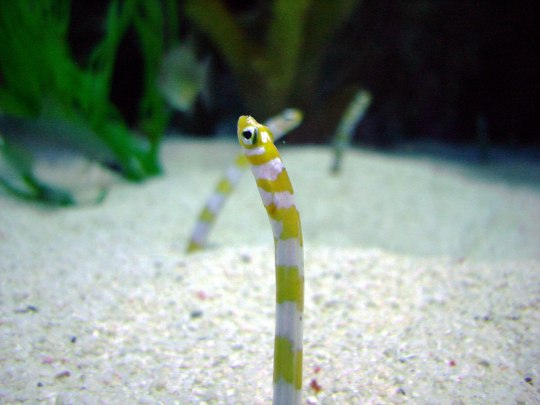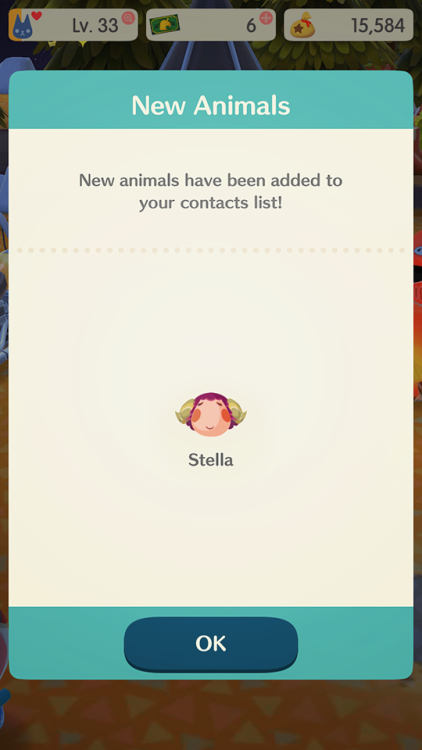#animal crossing pocket camp
hmm yes mod marshal… but have u considered agnes amd cherry are best friends who r LESBIANS….
Post link

Only for those who’s interested to add me on Pocket Camp…


-f r i e n d s
I was checking @heihu‘s market box earlier this morning and I caught Roald doing the cute booty dance! :3
I’ve been playing so much just to get a sheep. HER CAMPSITE REQUIREMENTS ARE PRIORITY!
That is all.
Post link
animal crossing I ʙʀᴇᴡsᴛᴇʀ’s ᴄᴏᴏᴘ vs. ᴘᴇᴀᴄʜʏ ᴄᴏᴏᴘ \(。•́◡•̀。)/
[yes I know, an animal crossing post again] I really love this special furniture in Pocket Camp and, as I actually am in my peachy-strawberry mood, I re-made this little and cute Brewster into a “peachy lemonade coop” :3 Like other special furnitures on Pocket Camp, I’d like to see some cute stuff like this on New Horizons ^^ (btw, I’m drawing and create some furniture set and clothes I’d like to see on this new coming game but it’s just ideas I’m dreaming of (n__n)
Post link






animalcrossingheaders
✩୧ ‧₊˚ other friends ⋆ ࣪. ₊ ˚
random headers






isabelle: what’s poppin lgbt’s
animalcrossingheaders









i really don’t remember where i got these headers from but please enjoy :)
Brought to you by a marine biologist who wants to know why this isn’t in the mainline games…
CLICK HERE FOR THE AC FISH EXPLAINED MASTERPOST!
For real - why is the Manta Ray not in the mainline games? If there was any ray species that everyone knows, it’s this guy. They were available for a few days in July 2020, and have only returned as recolored “special” versions since, but like - there’s nothing like the real thing. This will be a longer entry because I can’t shut up today.

So, there are actually two species of giant manta ray in the world - the reef manta ray and the oceanic manta ray. Often when you’re identifying fish, it’s a rule of thumb to consider coloring and markings last. This is because, just like people, fish have small differences that set individuals apart. For instance, in humpback whales, the white pattern under their tail flukes are so different you can name the individual, as real marine biologists who study them actually do. African penguin handlers at aquariums will identify individual penguins by the spot patterns on their bellies. Likewise, marine biologists who study mantas can also do this with the black spot patterns on their bellies. So, when we’re identifying separate species, we look for more physical traits, like face shape, gill raker or fin ray meristics (counts), etc etc. But when it comes to the two mantas, you actually can rely on color and pattern best. On the dorsal side (the top), the white patterns between the two species are different enough and consistent enough to tell them apart this way. The Giant Reef Manta Ray (Mobula alfredi) has gentle gradients from black to white, and those stripes are rounded. The Oceanic Manta Ray’s (Mobula birostris) white stripes are angular and sharp with no gradient. The black space between these stripes actually forms a “T” and so it’s really easy to see the ACPC species is the oceanic species.

FROM: https://www.oceanographicmagazine.com/news/giant-manta-endangered-iucn/giant-manta-1/
The Giant Mantas are within Class Chonrichthyes, meaning they are fish with a skeleton made of cartilage, the same kind of flexible material that makes up your ears and tip of your nose. Within Chondrichthyes, the rays and skates are within the SuperOrder Batoidea, which are closely related to sharks and host the most species within the Class. Within this SuperOrder are the Myliobatiformes, which consist of all the stingrays. These fish sport a long, serrated spine on their tails for defense, though some species, like the mantas, no longer have it anymore. Within this group are the Myliobatidae, your mantas, devil rays, and eagle rays that spend more time swimming in open water than other rays. A manta’s best defense is its large size (a wingspan up to 7m (23 feet) across!!), which deter many predators that aren’t also very large themselves. Like most giants in the oceans, the manta is a gentle giant that strains zooplankton, fish eggs, and fish larvae out of the water column.
They are so gorgeous and divers and snorkelers alike flock to tropical areas that host Manta Rays on their reefs. Like, this is one of those animals that is worth more alive (via tourism money) than it is dead (for Chinese tonics that don’t really do anything). Still, it’s endangered, of course. It was actually the first ray species to be listed as “endangered” and start getting the protection it needed. As we talked about with the Dorado, many governments have been very very slow to protect fish species, which, no one’s surprised about right? That humans care more about mammals than any other group? Like, I get it, mammals are our closest cousins and they are very charismatic, and etc. But fish like the manta rays live like mammals, with long lives and very slow growth rates that make them so vulnerable to our quickly-changing world and growing appetites from their parts. Luckily, people are starting to see this, and whether they are protecting them because we love them or love the profits they generate, I don’t care - as long as they will be with us for the long run.
And there you have it! Fascinating stuff, no?
Brought to you by a marine biologist and another splendid fellow…
CLICK HERE FOR THE AC FISH EXPLAINED MASTERPOST!
We haven’t done a deep-see species in a bit, so let’s do it. Also, funny that AC has done two fish with “splendid” in their names, and I’m here in my fish corner entertaining myself. Not sure if these fishies really are splendid, but the people who named them must think they are! So, today we’ll cover the Splendid Alfonsio, a fish that appeared in AC Pocket Camp for longer than a few days, from December 2021 to March 2022. I like how AC compensates for the fact deep sea fish appearing close enough inshore for you to fish them up from the beach is extremely unlikely, by having them show up in the winter when it’s dark and cold like their actual habitat. Who knows…maybe it will come back next winter!

The Splendid Alfonsio is named to species (Beryx splendens). This fish is a member of the Order Beryciformes, a group of nocturnal and/or deep water fish. These include squirrelfish and the Pineapplefish we covered a little bit ago. This group has a circumglobal (aka appears all around the world) distribution in the tropics and temperate regions. The Splendid Alfonsio is a native to the Indo-Pacific’s deeper water near the continental slope, or the area where shallow waters near land suddenly plunge down to the abyssal plain. Here, splendid alfonsio hang out around 25 and 1,250 metres (82 and 4,101 ft). Because of the depths it prefers, not much is really known about this fish, though research is happening, mostly because there is a fishery for this species. The more we know about a species’ life history (aka what it does during its life and how it does those things, and at what age/size) the better the fishery can be managed. Nevertheless, the Splendid Alfonsio is popular as a sushi fish in Japan - called kinmedai or golden eye snapper - and so explains why it makes an appearance in AC as well as other games, like Endless Ocean!

By NOAA's Fisheries Collection , SEFSC Pascagoula Laboratory; Collection of Brandi Noble, NOAA/NMFS/SEFSC - http://www.photolib.noaa.gov/htmls/fish4120.htm, Public Domain, https://commons.wikimedia.org/w/index.php?curid=8017064
Now, the first thing you may notice about the Splendid Alfonsio (SA) is its giant eyes that take up most of its face. If you’ve been reading along or know a little bit about the deep sea, you’ll be familiar with the fact that deep sea animals take everything to the extreme in order to survive in their extreme environment. When it comes to eyes, fish either evolve huge ones so they can see in the dark or they have tiny eyes with very poor eyesight if any at all because there ain’t anything to see down there anyway. For the SA, those big eyes can let in a lot of light, which is helpful in the dark when you need every photon you can get. Not only that, but the SA also has a special reflective layer in its eyes called the ‘tapetum lucidum’ that reflects any captured light back through the eye to give the organ a chance to get the best picture possible in low-light conditions. Many nocturnal animals that rely on their eyesight still will have this layer. This layer is why your cat’s and dog’s eyes glow when you take a photo of them with flash. If you could take pics of the SA anytime you wanted in the deep depths where it lives, they would also show some eyeshine.
And there you have it! Fascinating stuff, no?
Brought to you by a marine biologist and a splendid fellow…
CLICK HERE FOR THE AC FISH EXPLAINED MASTERPOST!
Man, fish are so crazy diverse that Pocket Camp could do a tourney every week and they still wouldn’t get through all of them for almost 200 years at the rate they’re going (3 per tourney, max). But, of course, they’re going to choose to feature the ones people can go see in an aquarium or while snorkeling on a reef first. So, today, we will talk about such a creature - the Splendid Garden Eel.

This guy showed up for a Special Goals Event called Surprise Eel Goals in July 2021.
The Splendid Garden Eel is a true eel as part of Order Anguilliformes. Like I’ve probably mentioned a bunch during this series, there are a lot of fish that *look* like eels, and are *called* eels, but if they aren’t in Anguilliformes, they aren’t true eels. Within this Order are the fish of Congridae that include conger eels and garden eels, like our guy today and his cousin we covered during ACNH, the Spotted Garden Eel. The Splendid is widespread across the Pacific tropics, including the southern archipelagos of Japan and south to The Philippines. You can also often find this and other garden eels quite regularly at an aquarium, since they’re so very peculiar and active.

By Azoreg at English Wikipedia, CC BY-SA 3.0, https://commons.wikimedia.org/w/index.php?curid=4381657
Splendids like to live in groups from three to a thousand! Once they find a spot on the sand they like as settling juveniles, they make their little burrow - no more than a little hole in the ground - a they just live there unless they are chased out or, y’know, eaten. But there is another important reason they may move to a new burrow and that’s to be closer to a potential mate. Males will bite each other as they fight for a lady’s affections, and whoever wins that display gets the spoils. When they aren’t looking for love, they are looking for food (aren’t we all?) Splendid Garden Eels eat plankton floating by on the current, so the entire colony will be seen facing the same way into the current to catch food. Seems pretty weird then that you catch this thing on rod and reel in ACPC, but I guess that’s the limitations of video games.
And there you have it! Fascinating stuff, no?
Brought to you by a marine biologist and fish with 4 eyes…or is it???
CLICK HERE FOR THE AC FISH EXPLAINED MASTERPOST!
We’re staying on the coral reef to explore more colorful camo. I know, it sounds weird, but last time we spoke about the Flame Angelfish, we discussed why coral reef fish are so colorful. It actually works in this clear, yet complicated environment where natural selection and sexual selection agree to create attractive colors that also help them hide. Today we’ll cover another denizen of the Indo-Pacific tropics to talk about one of the more popular methods of confusing predators - the eye spot. The fish that sports this today? The Threadfin Butterflyfish!

This one *just* appeared in AC Pocket Camp last month (March 2022) for the 48th fishing tourney. We may never see it again! Only time and Nintendo will tell!
Anyway. The threadfin is named to species - Chaetodon auriga, of the family Chaetodontidae, the butterflyfishes. Now, this group may look a lot like the marine angelfish - both groups sport some incredible colors and they are laterally compressed, which means they are really narrow when viewed from any angle by their left and right sides, which make them appear wider. This shapes is common in fish, but both these traits together make it really hard to separate which fish are butterflyfish and which are angelfish. The primary difference is that marine angels have a sharp spine on their operculum, the gill cover, while butterflies don’t. It’s such a tiny feature, but that’s the distinction. The threadfin itself distinguishes itself from other yellow-and-white fish with the long filament coming off its dorsal fin. AC did such a great, detailed work on that icon, dang!

By Bernard E. Picton BernardP - Own work, CC BY-SA 4.0, https://commons.wikimedia.org/w/index.php?curid=3280848
One thing you’ll notice about some reef fish are a single black spot on the opposite end of their bodies, while their eyes are covered by a dark stripe. This is a common method to deceive predators into thinking the fish’s head is on the side with the false eye, or eye spot. True, no one wants a chunk taken out of them, but if you had to choose, I’m sure you’d choose dorsal fin over your face. This may also confuse even a smarter predator that thinks ahead - if it thinks the fish’s face is on that side of the body, it makes logical sense that it would move forward that way. In that instant, the butterflyfish can dart in the opposite direction and get out of dodge.
It’s an incredible play on mimicry and camouflage, but not every threadfin butterfly has the eyespot. Some taxonomists would say they aresubspecies of each other, and therefore they are named as such. The one without the eyespot - Chaetodon auriga auriga - is native to the Red Sea, while the one with the eyespot - Chaetodon auriga setifer - is native to the rest of the threadfin’s range, which is huge. It’s very widely distributed across the Indo-Pacific, from outside the Red Sea to Hawaii, north to Japan, and South to French Polynesia.
And there you have it. Fascinating stuff, no?
Animal Crossing Fish - Explained #183
Brought to you by a marine biologist going back to saltwater…
CLICK HERE FOR THE AC FISH EXPLAINED MASTERPOST!
Okay, that’s enough freshwater for a little bit. Let’s get back to the ocean, where most fishies live (that’s not to say that freshwater fish aren’t amazing in their own right). Of course, we’ll be visiting the tropical coral reefs for our next few fish. Today we cover the aptly named Flame Angelfish.

Only appearing in pocket camp for a limited time in September of 2020, players could fish for this guy at Saltwater Shores. You may think the icon above is exaggerating those colors, but it’s not! The Flame Angelfish is one of the most vibrantly colored residents of the coral reef.
The Flame Angel is named to species - Centropyge loricula. It is a part of the Family Pomacanthidae, or the marine angelfish. The family itself is often placed in the Perciformes, the Order that comprises the greatest number of fish species. However, some taxonomists think they would belong in other orders, and some just say they are Incertae sedis right now, or that no one can agree where they go. I’m sure the fish don’t care.

By Andreas März from Darmstadt, Germany - 20120205-WJ7U0356_Lr, CC BY 2.0, https://commons.wikimedia.org/w/index.php?curid=21496392
Like some of the fish we have covered, the Flame Angel is a hermaphrodite - every single one is born a female, and they switch to being males when they find themselves the largest one in the group. These guys will swim in harems from 3 to 7 individuals, and both male and female are impeccably dressed.
Of course, there is stiff competition for the most lavish, most colorful fish on the tropical coral reef. The place is just bursting with color, no matter what phylum you belong. I’ve been asked quite a few times why that is. Why is everyone on the coral reef dressed to the nines? It may be because of the complexity of the habitat they inhabit. Fish and invertebrates living in this environment actually hide better being that vibrant against such a backdrop because they employ disruptive camouflage. Just like the zebra, these patterns of color disrupt the shape of the fish, and, when schooling, can make it really hard for a predator to target an individual. What’s more, corals thrive in clear water, making visual acuity super important to most things that call the day time coral reef home. That means that visual displays, signals, and color play a vital role in these animals’ lives. When you live such a life, it’s always a struggle between two fundamental questions: “Can my predators/prey see me?” and “Can my mate see me?” Most of the time, the needs to mate and to not-die are at odd, but on the coral reef, they actually agree, so everyone can go hog wild on their colors and patterns.
If you’d like to read more about this, read this article I used to help craft this AC Fish Explained!
And there you have it. Fascinating stuff, no?
Animal Crossing Fish - Explained #182
Brought to you by a marine biologist and a nod to yesterday’s joke I guess…
CLICK HERE FOR THE AC FISH EXPLAINED MASTERPOST!
I’m not a fan of April 1st. TBH I avoided Tumblr for the most part yesterday, but I couldn’t not-notice one of the running gags yesterday was about crabs. So, today, we’ll cover another little crab boi - the Freshwater Crab!

Here’s another little friend who appeared for one event and then was never seen again. The Freshwater Crab was introduced in June of 2020 and, yeah, that’s it. The nice thing about these event animals, though, at least from my perspective, is that *most* of them are named directly to species common name, so, like, I haven’t had to do some extended sleuthing in quite some time. Heh - that all ended today.
There are about 1300 species under the umbrella term “freshwater crab” in Brachyura - the true crabs. They come from a bunch of different SuperFamilies, so it’s speculated the move into freshwater habitats has happened multiple times over the true crab lineage. We actually covered another one when we spoke about the Vampire Crab who is closely related to today’s crab - they both come from Family Sesarmidae. Just like that cutie, this one is also popular in the pet trade for its small size and bright, varied coloration. I do believe this is Perisesarma bidens, the Red-Clawed Crab!

Picture from Fish Keeping Project.
Although it’s called the Freshwater Crab, and it can live in freshwater, it is most at home in brackish water, which is much more salty than a river or pond, but not as much as the ocean. This is because these crabs’ natural habitat are tropical mangrove swamps, which typically border the ocean. On a wider scale, these crabs are widespread through the Indo-Pacific region, from Zanzibar to Japan. These are semi-terrestrial, meaning they spend much more time on dry land than you’d expect. At low tide, these crabs can be found on the mangrove forest floor just chillin’ and finding some grub to eat, which can be really anything they can get their claws into. Like, if it’s not a predator, it’s food. Which…can be problematic since they have been found to eat trash, too. Oof.
And there you have it! Fascinating stuff, no?












![i’m really happy that Julian is finally in pocket camp! :・゚☆ ⸜( ˙ ˘ ˙) [twitter] i’m really happy that Julian is finally in pocket camp! :・゚☆ ⸜( ˙ ˘ ˙) [twitter]](https://64.media.tumblr.com/d9f24cb484338b8356e640a17a442f1b/tumblr_pbz7zfrGCn1rlh3n5o1_500.png)